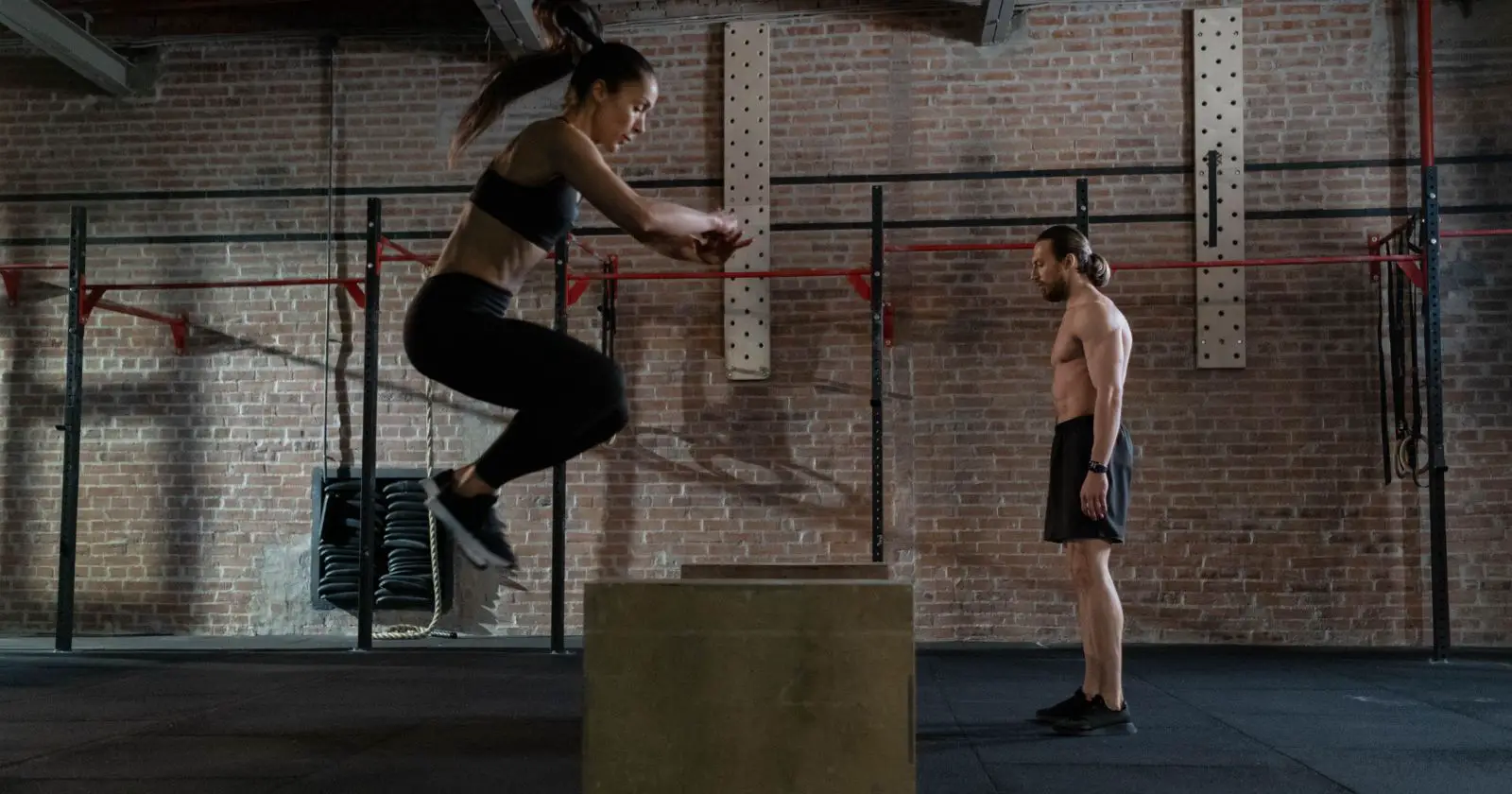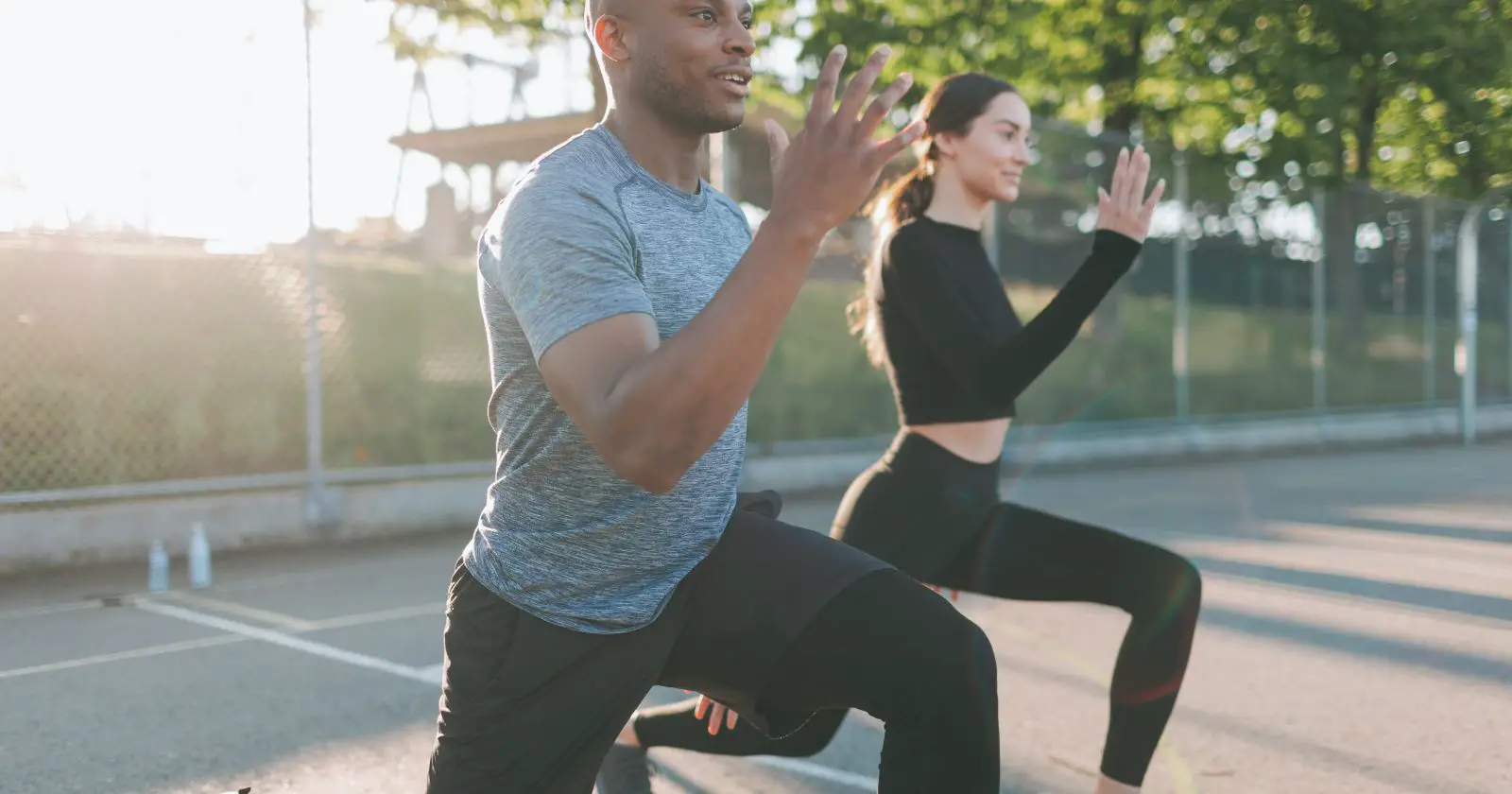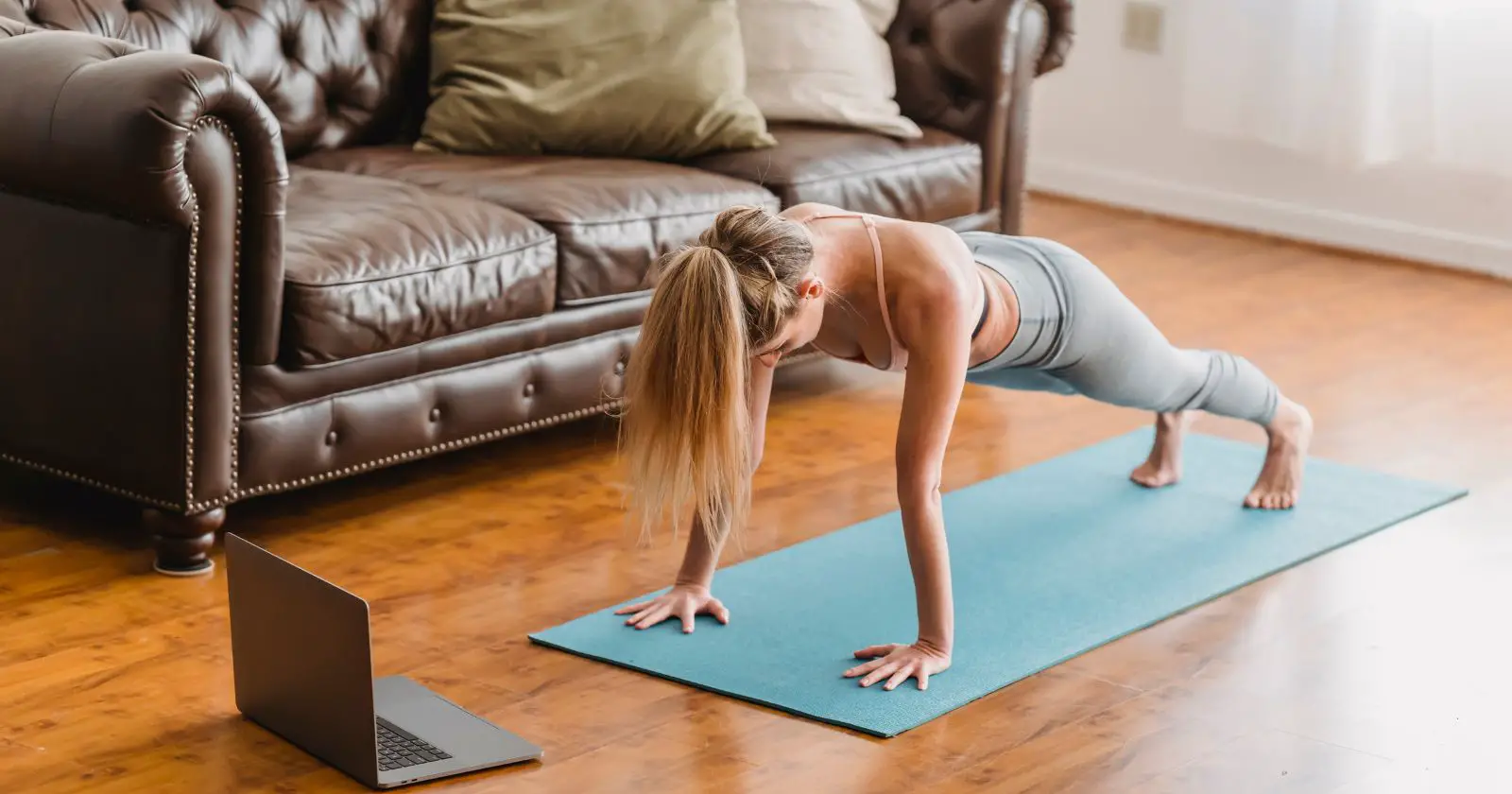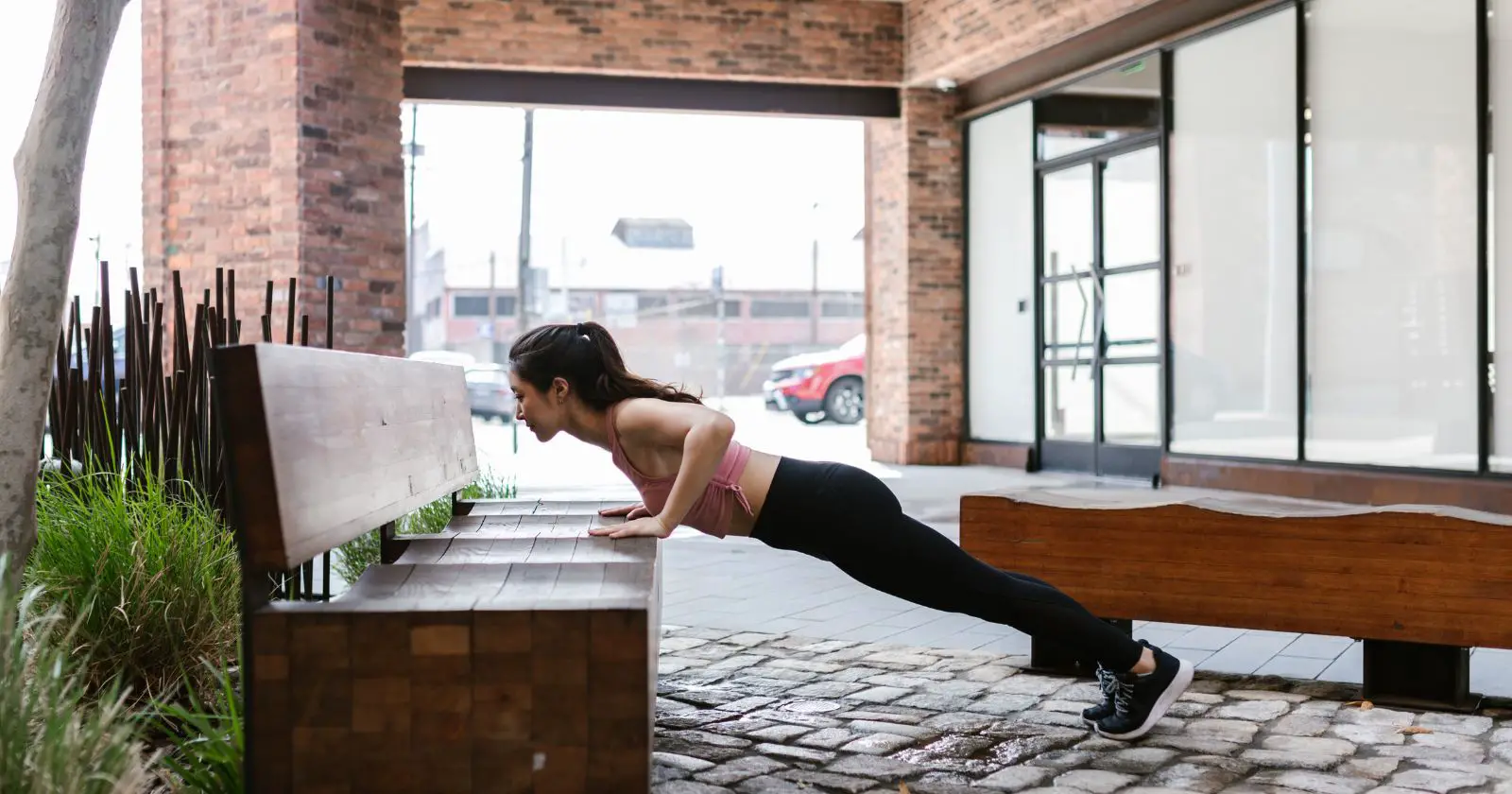Plyometric exercise routines are a popular form of high-intensity training that can help improve athletic performance, increase strength and power, and burn calories. These exercises involve explosive movements that require a combination of speed, strength, and coordination, making them an effective way to challenge the body and push its limits.
Understanding Plyometric Exercises
Plyometric exercises are designed to increase the speed and force of muscular contractions, which can help improve power and explosiveness. These exercises typically involve jumping, hopping, bounding, or other explosive movements that require a quick stretch-shortening cycle of the muscles. Plyometrics can be used to target specific muscle groups or movements, such as jumping or sprinting, and can be modified to fit different fitness levels and goals.

Benefits of Plyometric Training
Plyometric training can offer a range of benefits for athletes and fitness enthusiasts alike. In addition to improving power and explosiveness, plyometrics can also help increase agility, speed, and coordination. Plyometrics are also an effective way to burn calories and build lean muscle mass, making them a great addition to any weight loss or muscle-building program. However, it’s important to approach plyometrics with caution and use proper form and technique to avoid injury.
Key Takeaways
- Plyometric exercises are high-intensity movements that can improve athletic performance, increase strength and power, and burn calories.
- Plyometrics involve explosive movements that require a combination of speed, strength, and coordination.
- Plyometric training can offer a range of benefits, including improved power, agility, speed, coordination, and calorie burn. However, proper form and technique are essential to avoid injury.
Understanding Plyometric Exercises
Plyometric exercises, also known as plyometrics, are a type of exercise that involves short, explosive movements designed to increase muscle force and power. They are often used by athletes to improve their performance in sports, but can also be incorporated into a regular exercise routine for anyone looking to increase their strength and endurance.
Plyometric exercises involve a rapid stretch of the muscle followed by a powerful contraction, which is known as the stretch-shortening cycle. This cycle allows the muscle to produce more force than it would be able to with a slow, controlled movement.
Some common plyometric exercises include jumping, hopping, skipping, and bounding. These exercises can be done with just bodyweight or with added resistance, such as weights or resistance bands.
It is important to note that plyometric exercises should be approached with caution, as they can be high-impact and put stress on the joints. It is recommended to start with lower intensity exercises and gradually increase the difficulty over time.
Overall, plyometric exercises are a great way to improve muscle force and power, but should be done with proper form and under the guidance of a qualified trainer or coach.
Benefits of Plyometric Training
Plyometric exercises are a type of high-intensity training that involves explosive movements to build strength, speed, and power. The benefits of plyometric training are numerous and can be enjoyed by athletes of all levels and backgrounds.
Improved Athletic Performance
One of the primary benefits of plyometric training is its ability to improve athletic performance. Plyometric exercises require a high level of coordination, agility, and balance, which can help athletes develop these skills and translate them into better performance on the field or court. In addition, plyometric training can help athletes build overall strength, stamina, and endurance, which can improve their ability to perform at a high level for longer periods of time.
Increased Strength and Power
Plyometric exercises are designed to build explosive power and strength by using the body’s natural elasticity and momentum. By incorporating plyometrics into a regular training routine, athletes can improve their overall strength and power, which can translate into better performance in a variety of activities, from running and jumping to lifting and throwing.
Improved Cardiovascular Fitness
Plyometric exercises are a great way to get the heart rate up and improve cardiovascular fitness. By incorporating plyometrics into a regular training routine, athletes can improve their ability to perform high-intensity activities for longer periods of time, which can translate into better performance in a variety of sports and activities.

Low-Impact Option
Plyometric exercises can be a great low-impact option for athletes who want to build strength and power without putting too much stress on their joints. Unlike traditional weightlifting exercises, which can put a lot of stress on the joints, plyometrics use the body’s natural elasticity and momentum to build strength and power.
Conclusion
Overall, plyometric training is a great way to improve athletic performance, build strength and power, and improve cardiovascular fitness. Whether you’re a seasoned athlete or just starting out, incorporating plyometrics into your training routine can help you reach your goals and perform at your best.
Key Plyometric Exercise Routines
Plyometric exercises are an excellent way to increase strength, power, and speed. When done correctly, these exercises can help improve athletic performance and reduce the risk of injury. Here are some key plyometric exercises to include in your routine:
Jumping Exercises
Jumping exercises are a great way to improve explosive power and overall lower body strength. Some of the most effective jumping exercises include:
- Box Jumps: Jump onto a box or platform, then step down and repeat.
- Squat Jumps: Start in a squat position, then jump up explosively and land back in a squat.
- Tuck Jumps: Jump up and bring your knees to your chest, then land and repeat.

Lower Body Exercises
Lower body exercises can help improve strength and stability in the legs and hips. Some of the most effective lower body plyometric exercises include:
- Lunges: Step forward with one leg and lower your body until your front knee is bent at a 90-degree angle, then push off your front foot and jump up.
- Squats: Start in a squat position, then jump up explosively and land back in a squat.
- Burpees: Start in a standing position, then squat down, jump your feet back into a plank position, do a push-up, jump your feet back to your hands, and jump up.

Upper Body Exercises
Upper body plyometric exercises can help improve strength and power in the chest, shoulders, and arms. Some of the most effective upper body plyometric exercises include:
- Plyometric Push-Ups: Start in a push-up position, then explosively push off the ground and clap your hands before landing back in a push-up position.
- Medicine Ball Throws: Hold a medicine ball and throw it as far as you can, then catch it and repeat.

Incorporating these key plyometric exercises into your routine can help improve your athletic performance and overall fitness level. However, it’s important to start slowly and gradually increase the intensity and volume of your workouts to avoid injury.
Proper Form and Technique
Proper form and technique are crucial when performing plyometric exercises to prevent injuries and maximize results. Here are some key points to keep in mind:
- Form: Maintaining proper form throughout the exercise is essential to avoid injury and maximize results. It’s important to keep the core engaged, shoulders back and down, and chest open. Additionally, the knees should be aligned with the toes and not extend beyond the toes, and the hips should be pushed back during the landing phase.
- Landing: Proper landing technique is critical to prevent injuries, especially to the knees and ankles. To land safely, it’s important to keep the knees bent and aligned with the toes, and the hips pushed back. Landing should be soft and controlled, with the weight distributed evenly across the feet.
- Squat Position: The squat position is a fundamental position in many plyometric exercises. To perform a proper squat, stand with the feet shoulder-width apart, toes pointing slightly outward. Keep the chest open and shoulders back and down, and engage the core. Lower the hips until the thighs are parallel to the ground, keeping the knees aligned with the toes.
- High Plank Position: The high plank position is another fundamental position in many plyometric exercises. To perform a proper high plank, start in a push-up position with the hands shoulder-width apart and the elbows straight. Keep the core engaged and the hips level with the shoulders.
- Elbows: When performing plyometric exercises that involve the arms, such as jump squats or burpees, it’s important to keep the elbows close to the body. This helps to engage the core and prevent injury.
- Ankles: The ankles are vulnerable to injury during plyometric exercises, especially during the landing phase. To protect the ankles, it’s important to wear proper footwear and to land softly and with control.
By following these tips for proper form and technique, individuals can perform plyometric exercises safely and effectively, reducing the risk of injury and maximizing their results.
Incorporating Plyometrics into Your Workout Routine
Incorporating plyometric exercises into your workout routine can be a great way to increase your power and speed. Plyometric exercises involve explosive movements that require maximum force in a short amount of time. These exercises are great for athletes who want to improve their performance in running, jumping, and other high-intensity activities.
To incorporate plyometrics into your workout routine, start by warming up with some light cardio exercises. This will help to get your blood flowing and prepare your muscles for the high-intensity exercises to come. Running or jumping jacks are great warm-up exercises to include in your routine.
When you are ready to start your plyometric exercises, begin with a lower intensity exercise and gradually increase the intensity as you become more comfortable with the movements. Start with exercises that involve lower reps and shorter durations, and gradually increase the number of reps and duration of each exercise.
It is important to maintain good form when performing plyometric exercises to avoid injury. Start with basic exercises such as jump squats, box jumps, and jumping lunges before moving on to more advanced exercises.
Incorporating plyometric exercises into your workout routine can be a great way to increase your power and speed. However, it is important to remember that these exercises are high-intensity and should be done in moderation. Overdoing it can lead to injury and muscle soreness.
In conclusion, incorporating plyometric exercises into your workout routine can be a great way to improve your athletic performance. Start with a good warm-up, gradually increase the intensity of your exercises, and maintain good form to avoid injury.
Check out this article if you’re wanting more on incorporating plyometrics into your routine.
Safety and Injury Prevention
Plyometric exercises are high-impact movements that require proper form and technique to prevent injuries. While they can be beneficial for improving power and strength, they can also increase the risk of injury if not performed correctly. Therefore, it is crucial to follow safety guidelines to minimize the risk of injury.
Proper Technique
Proper technique is essential when performing plyometric exercises to prevent injuries. It is crucial to maintain proper form and control throughout the movement to avoid putting excessive strain on the joints, especially the knees and hips.
One key aspect of proper technique is landing absorption technique. This technique involves landing softly and absorbing the impact of the landing through the muscles and joints. This technique can be improved through proper training and practice.
Gradual Progression
Another important aspect of injury prevention is gradual progression. It is crucial to start with low-intensity exercises and gradually increase the intensity and difficulty as the body adapts. Overdoing it can lead to pain and injury, especially for those who are new to plyometric exercises.
Safety Considerations
There are some safety considerations to keep in mind when performing plyometric exercises. Here are some tips to minimize the risk of injury:
- Wear proper footwear with good support and cushioning.
- Choose a safe and suitable surface to perform the exercises.
- Avoid performing plyometric exercises if you have a history of joint pain or injury.
- Always warm up before performing plyometric exercises to prepare the muscles and joints.
- Avoid overtraining and allow enough time for recovery between sessions.
Conclusion
In summary, plyometric exercises can be a valuable addition to a workout routine for improving power and strength. However, it is crucial to follow proper technique and safety guidelines to prevent injuries. Gradual progression, proper technique, and safety considerations are crucial for minimizing the risk of injury and maximizing the benefits of plyometric exercises.
Plyometrics for Different Fitness Levels
Plyometric exercises can be tailored to different fitness levels, making them a versatile workout option for beginners and advanced athletes alike. A certified personal trainer can help design a plyometric exercise routine that is appropriate for an individual’s fitness level and goals.
For beginners, it is important to start with basic plyometric exercises that focus on building strength and coordination. These exercises may include jump squats, box jumps, and lateral jumps. It is important to focus on proper form and technique to avoid injury.
Intermediate athletes can incorporate more advanced plyometric exercises such as jump lunges, clap push-ups, and single-leg box jumps. These exercises require more explosive power and can help improve overall athletic performance.
Advanced athletes can incorporate even more challenging plyometric exercises such as depth jumps, hurdle jumps, and plyometric push-ups. These exercises require a high level of strength, power, and coordination.
A personal trainer can help individuals determine their fitness level and design a plyometric exercise routine that is appropriate for their goals. It is important to gradually increase the intensity and complexity of plyometric exercises to avoid injury and maximize results.
Overall, plyometric exercises can be an effective way to improve strength, power, and coordination for individuals of all fitness levels. With the guidance of a certified personal trainer, individuals can safely incorporate plyometric exercises into their workout routine and achieve their fitness goals.
Plyometric Exercises for Specific Sports
Plyometric exercises are beneficial for athletes of all types, including runners, basketball players, football players, and baseball players. These exercises help to improve power, speed, and endurance, which are essential for success in these sports.

Runners
Plyometric exercises can help runners improve their stride length, power, and speed. These exercises can also help to reduce the risk of injury. Some examples of plyometric exercises for runners include:
- Jumping lunges
- Box jumps
- Single-leg hops
- Skater jumps
Basketball
Basketball players can benefit from plyometric exercises that improve their vertical jump, agility, and speed. These exercises can also help to improve their ability to change direction quickly. Some examples of plyometric exercises for basketball players include:
- Jump squats
- Lateral jumps
- Depth jumps
- Tuck jumps
Football
Football players can benefit from plyometric exercises that improve their power, speed, and agility. These exercises can also help to reduce the risk of injury. Some examples of plyometric exercises for football players include:
- Broad jumps
- Box jumps
- Plyometric push-ups
- Medicine ball slams
Baseball
Baseball players can benefit from plyometric exercises that improve their power, speed, and agility. These exercises can also help to improve their throwing and hitting ability. Some examples of plyometric exercises for baseball players include:
- Medicine ball throws
- Single-leg hops
- Skater jumps
- Lateral bounds
Overall, plyometric exercises are an effective way for athletes to improve their performance in their respective sports. By incorporating these exercises into their training routine, athletes can improve their power, speed, and endurance, which can help them to perform at their best.
Plyometric Equipment and Alternatives
Plyometric exercises can be performed with or without equipment. While some equipment can enhance the intensity and effectiveness of plyometric exercises, it is not necessary to have access to a gym or expensive equipment to reap the benefits of plyometrics.
Gym Equipment
Gym equipment such as plyometric boxes, resistance bands, and medicine balls can be used to add variety and challenge to plyometric exercises. Plyometric boxes are typically made of wood or foam and come in various heights to allow for different levels of difficulty. Resistance bands can be used to add resistance to exercises such as jump squats and lunges. Medicine balls are great for adding weight to exercises such as squat jumps and overhead throws.

Bodyweight Exercises
Bodyweight exercises are a great alternative to using equipment for plyometric exercises. Exercises such as jump squats, plyometric push-ups, and box jumps can be performed without any equipment and still provide an effective plyometric workout.

Dumbbells and Chairs
Dumbbells and chairs can also be used to add variety to plyometric exercises. Dumbbells can be used to add weight to exercises such as squat jumps and lunges. Chairs can be used as a platform for exercises such as step-ups and box jumps.

Mirrors
Mirrors can be a helpful tool when performing plyometric exercises. They allow the individual to check their form and ensure that they are performing the exercise correctly. This can help prevent injury and ensure that the exercise is being performed effectively.
Overall, there are many options for equipment and alternatives when it comes to plyometric exercises. Whether you have access to a gym or not, there are plenty of options for adding plyometrics to your workout routine.
Frequently Asked Questions
What are the benefits of plyometric exercises?
Plyometric exercises are a great way to improve athletic performance, increase strength, and burn calories. They can help develop explosive power, speed, agility, and coordination. Plyometrics can also help prevent injuries by strengthening muscles, tendons, and ligaments. Additionally, plyometric exercises can be a fun and challenging way to mix up your workout routine.
What is the recommended frequency for plyometric exercise?
The recommended frequency for plyometric exercise depends on your fitness level and goals. Beginners should start with 1-2 plyometric sessions per week, while more experienced athletes can do up to 3-4 sessions per week. It’s important to allow time for recovery between sessions to prevent injury and maximize results.
What is the ideal number of plyometric exercises per workout?
The ideal number of plyometric exercises per workout depends on your fitness level and goals. Beginners should start with 1-2 exercises per workout, while more experienced athletes can do up to 4-5 exercises per workout. It’s important to choose exercises that target different muscle groups and to allow time for recovery between sets.
What is the recommended plyometric training program for athletes?
The recommended plyometric training program for athletes should be tailored to their specific sport and fitness level. A typical program may include a warm-up, followed by a series of plyometric exercises targeting different muscle groups, and a cool-down. It’s important to start with low-impact exercises and gradually increase intensity and volume over time. It’s also important to work with a qualified trainer or coach to ensure proper form and technique.

